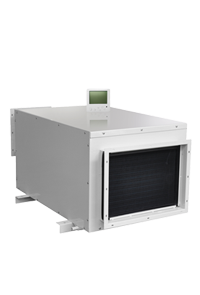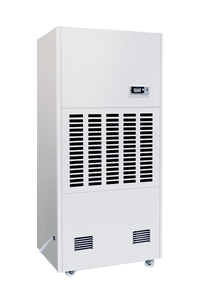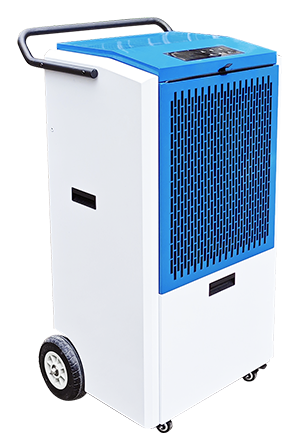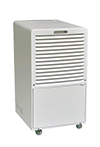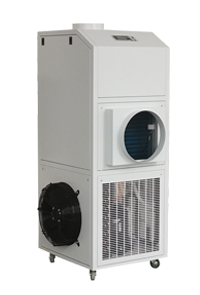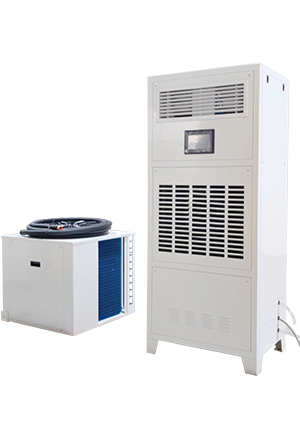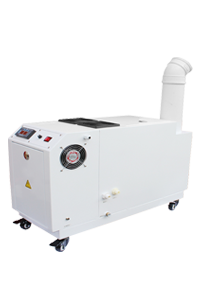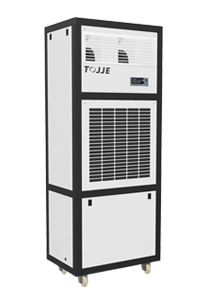News
Warehouse and industrial dehumidifiers are critical for maintaining proper humidity levels to protect stored goods, equipment, and the building structure itself from moisture-related damage such as corrosion, mold growth, and product spoilage. Here are some solutions and considerations for warehouse and industrial dehumidifiers:
1. Desiccant Dehumidifiers
- How they work: Use a desiccant material to absorb moisture from the air. These are ideal for environments where low humidity is essential or where the temperature is too low for refrigerant dehumidifiers to be effective.
- Applications: Cold storage, pharmaceutical warehouses, electronics, or food storage that requires extremely low humidity levels.
- Advantages: Works effectively in low-temperature conditions, capable of reaching very low relative humidity levels.
2. Refrigerant Dehumidifiers
- How they work: Refrigerant dehumidifiers cool the air to condense moisture, which is then collected and removed. These are commonly used in warehouses with moderate humidity requirements.
- Applications: General warehousing, food processing, and manufacturing environments where moderate humidity control is sufficient.
- Advantages: Energy-efficient and effective in warm and humid climates.
3. HVAC-integrated Dehumidification Systems
- How they work: These systems integrate dehumidification into the overall HVAC system to provide centralized humidity control throughout large warehouses and industrial spaces.
- Applications: Large-scale warehouses, distribution centers, and factories where temperature and humidity need to be controlled simultaneously.
- Advantages: Provides a comprehensive climate control solution, often more energy-efficient for large areas.
4. Hybrid Systems (Refrigerant + Desiccant)
- How they work: Combine refrigerant and desiccant dehumidification technologies to optimize moisture removal in varying temperature and humidity conditions.
- Applications: Warehouses and facilities with fluctuating temperatures or where both low humidity and high moisture removal capacity are needed.
- Advantages: Versatile, energy-efficient, and capable of functioning in a wide range of conditions.
5. Portable Industrial Dehumidifiers
- How they work: Portable units that can be moved around the facility to address specific problem areas.
- Applications: Smaller warehouses, temporary storage areas, or spaces where permanent installation is not feasible.
- Advantages: Flexibility to target specific areas with high moisture levels, cost-effective for temporary solutions.
6. Energy-efficient Dehumidifiers
- Features: These dehumidifiers are designed with energy-efficient compressors, advanced control systems, and smart sensors to reduce energy consumption while maintaining optimal humidity levels.
- Applications: Warehouses and industries looking to reduce operational costs while maintaining strict humidity control.
- Advantages: Lower operating costs, environmentally friendly.
7. Condensation Control and Humidity Monitoring
- Condensation control systems: Use sensors and dehumidifiers to prevent condensation on warehouse walls and roofs, which can lead to structural damage and mold growth.
- Humidity monitoring systems: These systems continuously monitor humidity levels in the warehouse and adjust dehumidification as needed. Integration with building management systems (BMS) allows for real-time monitoring and adjustments.
8. Custom-engineered Dehumidification Systems
- How they work: Tailored systems designed specifically to meet the unique requirements of a facility based on size, climate, and the nature of the stored goods.
- Applications: Facilities with specific dehumidification needs, such as cold storage, archival warehouses, or specialized manufacturing environments.
- Advantages: Customized solutions that optimize performance for the specific requirements of the facility.
Key Considerations:
- Size of the space: The larger the warehouse, the more powerful the dehumidifier needs to be.
- Ambient temperature: Desiccant dehumidifiers are better suited for cold environments, while refrigerant dehumidifiers work well in warmer areas.
- Humidity level requirements: Depending on the industry and the nature of the stored goods, the target relative humidity (RH) may vary significantly.
- Energy consumption: Energy-efficient models may have a higher upfront cost but reduce long-term operational expenses.
By selecting the appropriate dehumidification solution, warehouses and industrial facilities can protect their inventory, equipment, and structures from moisture-related issues while optimizing energy usage.

